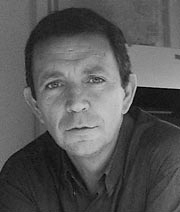Elías Torres
Ibiza, 1944
Elías Torres was born in Ibiza in 1944, and graduated in architecture at the University of Barcelona in 1968. That same year, he set up his architecture studio, with José Antonio Martínez Lapeña. He received his doctorate in 1993 for the ETSAB (School of Architecture of Barcelona.) Torres has also been into teaching, at the ETSAB, the ETSAV and the ETSA Ramón Llull, and has been a Visiting Professor at UCLA and at Harvard University. Another of his facets has been writing, in 1980 he wrote the guidebook Guía de Arquitectura de Ibiza y Formentera (Architecture guide to Ibiza and...
Elías Torres was born in Ibiza in 1944, and graduated in architecture at the University of Barcelona in 1968. That same year, he set up his architecture studio, with José Antonio Martínez Lapeña. He received his doctorate in 1993 for the ETSAB (School of Architecture of Barcelona.) Torres has also been into teaching, at the ETSAB, the ETSAV and the ETSA Ramón Llull, and has been a Visiting Professor at UCLA and at Harvard University. Another of his facets has been writing, in 1980 he wrote the guidebook Guía de Arquitectura de Ibiza y Formentera (Architecture guide to Ibiza and Formentera).
The list of that this team of architects has undertaken, public as well as private, is fairly vast, and many of them have been awarded with FAD architecture awards. It is the case, for instance, of the Villa Cecilia garden in Barcelona, the Móra d Ebre hospital in Tarragona, the Villa Olímpica housing complex in Barcelona, the La Granja escalator (Toledo), the restoration of the Ronda promenade in the city walls of Palma de Mallorca, or the restoration of Gaudí s Park Güell (Barcelona). Another of their outstanding projects was the Kumamoto Annex Museum in Japan, for which they received the Belca prize in Tokyo in 1995. Among their most recent works, it is worth mentioning the project of the Fòrum esplanade and its photovoltaic power plant (Barcelona, 2004). In fact, it received the special award of the International Architecture Biennale in Venice.
Among Martínez Lapeña s and Tores urban designs we may find the famous Pal·li bus stop shelters in Barcelona (ADI-FAD Delta award in 1988, with J. L. Canosa), the first element that represented a new contemporary approach to urban elements by combining it with advertising. Another of their designs is the panel assembled Plaza flower bed; the Lampelunas streetlamp (ADI-FAD Delta de Oro award, 1986), which seems like a lighted tree, one of the first Streetlamps that reflects a worry on its formal impact on the urban environment; the Rodes hanging system, that was designed for the monastery Sant Pere de Rodes in the Empordà (Girona); or the obstacles for the horse riding competitions in the 1992 Barcelona Olympic Games.
